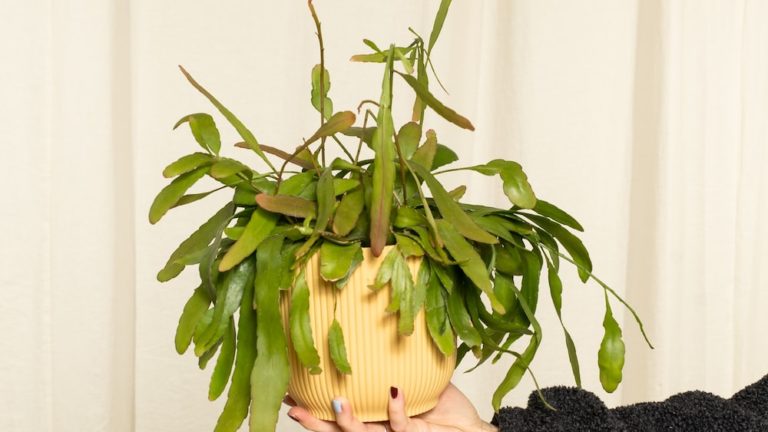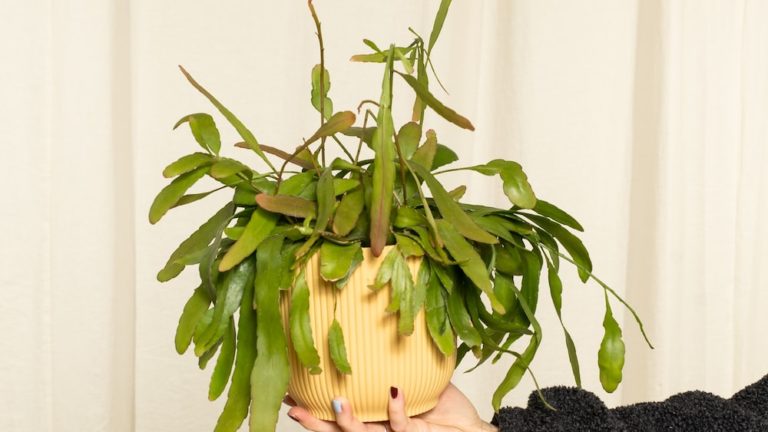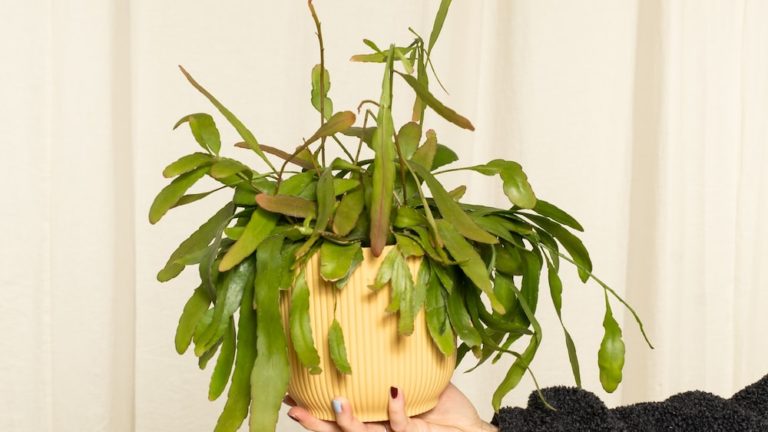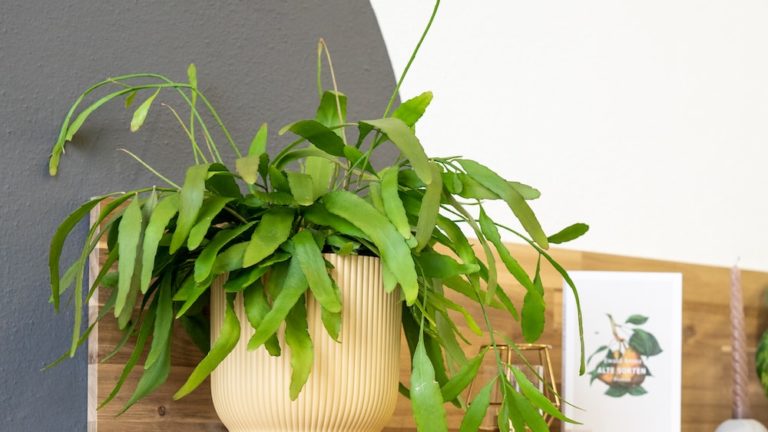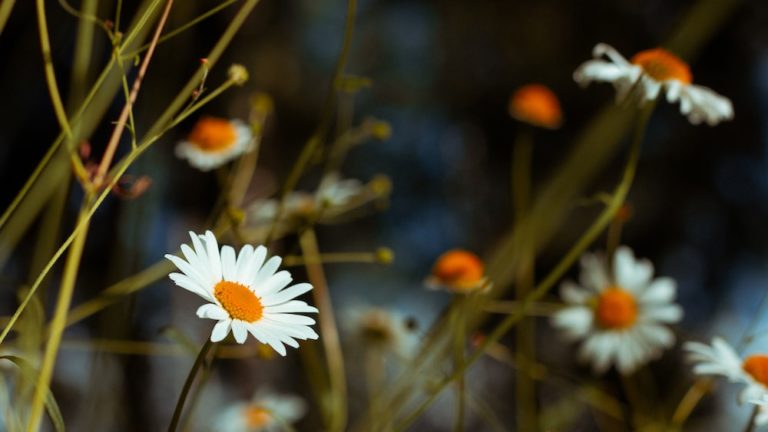Rhipsalis Grandiflora: The Stunning Mistletoe Cactus
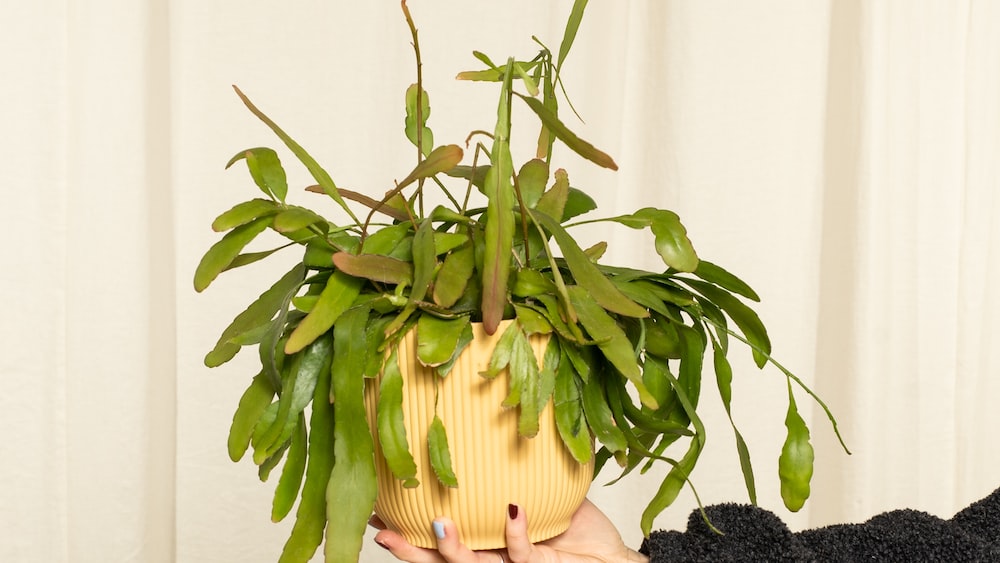
Rhipsalis Grandiflora: The Stunning Mistletoe Cactus
Hello, dear botanophiles! Come, sit and gather around. Join me in an intimate exploration of an enchanting epiphytic charm that has found a home in my heart and my garden alike – the rhipsalis grandiflora.
With a nod toward the cacti enthusiasts among us, I am reminded of my first rendezvous with this delightful species. It was an unexpectedly sunny day – the winter chill still floated in the air, yet the warmth was a welcomed guest. The gentle sunbeams filtered through skeletal branches, highlighting the macramé hanger holding my newly-acquired elegy of nature – a picturesque specimen of rhipsalis grandiflora.
For the uninitiated, cacti are like intricate poems written by the scribes of nature – each species spinning its unique tale of resilience, adaptability, and striking allure. As we journey through the beauty and enigma of the rhipsalis grandiflora today, may we deepen our kinship with these resilient beings and uncover the depth of their rich narratives.
Understanding Rhipsalis Grandiflora
To truly delve into the rhipsalis grandiflora’s enigma, it’s crucial to understand its essence and context, intertwining the quilt of its existence with our own perception. So, let’s take a step back, marvel at the canvas of nature and begin our discourse on this stunning mistletoe cactus.
What is Rhipsalis Grandiflora?
In the simplest terms, rhipsalis grandiflora, more fondly known as the mistletoe cactus, is an epiphytic cactus. This means, unlike its ground-based brethren, this resilient being uncannily finds its home, not in the scorching desert sands but within the welcoming boughs of towering trees.
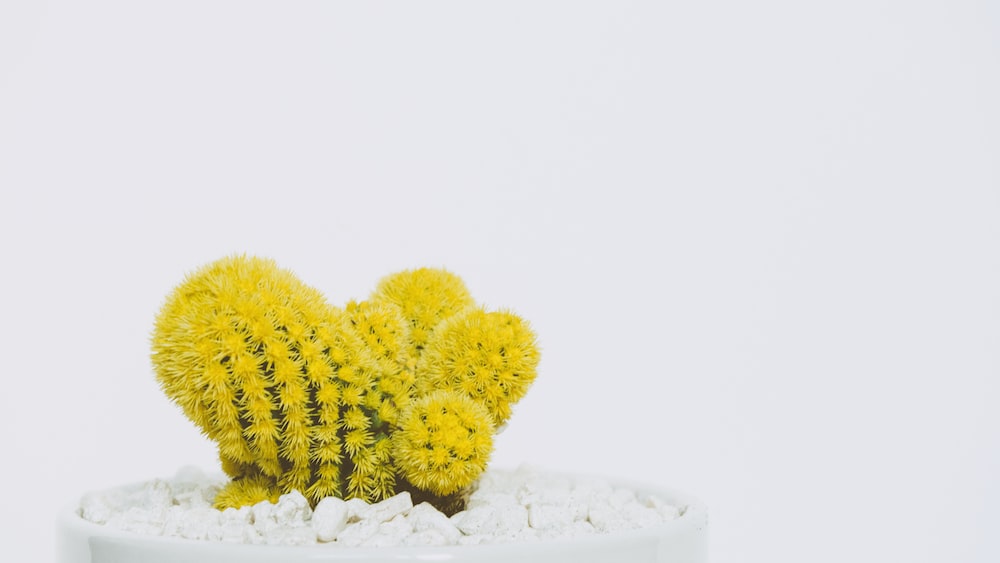
You’d find this rather peculiar characteristic associated with a select group of cacti, but it is precisely this anomaly that adds another layer of intrigue to these fascinating beings. With their flattened, ribbon-like, cascading stems and the charming display of little, bell-shaped floral hats, the rhipsalis membership is a spectacle. But what sets the grandiflora apart within this floral aristocracy?
Well, apart from sporting larger, creamier blooms, the grandiflora shows reclusiveness to direct sun unlike its sun-loving kins. It prefers a dapple of sunshine, much like a dance between the sword and the shield, as it thrives beneath the dappled canopies of its arboreal homes.
The mistletoe cactus, or rhipsalis grandiflora, is an epiphytic cactus that thrives in the shade of trees, showcasing larger, creamier blooms and a preference for indirect sunlight.
The Origin and Distribution of Rhipsalis Grandiflora
Peering into the past, the Rhipsalis family’s lineage unravels a tale of exploration and adaptability. With native roots dug firmly in the rich, verdant soils of Central and South America, the Rhipsalis made remarkable strides, blossoming into a global presence.
While the species’ distinct lineage would have you picturing a tropic haven, the truth of their origins is as close as your windowsill! A 2011 study in The American Journal of Botany reveals how a single ancestor presumably traveled all the way to Africa, possibly transported by migratory bird, and then diversified throughout the old world tropics. These well-traveled cacti were indeed world cruisers before it was cool!
Though vastly adapted now, the Rhipsalis retains its heritage by choosing to nest in canopies of age-old trees, still favoring the high humidity and understory light prevalent in their ancestral Central and South American homes.
Identifying Rhipsalis Grandiflora
With your newly gained insights about the Rhipsalis family, it’s time to delve into the intricacies that make the rhipsalis grandiflora a distinct and captivating specimen.
Physical Characteristics of Rhipsalis Grandiflora
First brushing against a mature Rhipsalis grandiflora sends a rapturous shiver down one’s spine. Among its most striking features are the cascading stems that stretch out to dance freely with the wind, presenting a spectacle akin to a gently swaying chandelier.
These slender, trailing stems are segmented and flattened, creating a shaggy silhouette. As the seasons change, a crescendo of nature begins as the grandiflora showcases its true grandeur. An eruption of bell-shaped flowers, often pale yellow or creamy white, adorn the cactus. Following the floral display, white or pink berries (technically drupes), each encapsulating a single seed, form a delightful finale.
Varieties of Rhipsalis
By diving deeper into the Rhipsalis family, one realizes the subtle variations that add a captivating depth to this lineage. While the grandiflora is the star of today’s discourse, we must acknowledge its intriguing siblings that, together, form the rhapsodic Rhipsalis ensemble.
Rhipsalis baccifera, often known as “mistletoe cactus,” is perhaps the most wide-ranging species, making homes from the Americas to Africa to Sri Lanka. Meanwhile, the Rhipsalis campos-portoana sports distinctly cylindrical stems and a preference for brighter light. The Rhipsalis agudoensis, a shy, fairy-like participant, blooms only under nocturnal curtains. Each member of this cacti family holds a distinctive charm, laying testament to nature’s eloquent creativity.
Caring for Rhipsalis Grandiflora
Now that we’ve begun to unravel the mysteries of rhipsalis grandiflora, how do we cultivate and care for such an exotic cactus at home? The answer rests in understanding its natural habitat and replicating those conditions as much as possible. Get ready, my dear green thumbs, as we delve into the ideal caring conditions for your own mistletoe cactus.
Ideal Growing Conditions for Rhipsalis Grandiflora
Growing a Rhipsalis Grandiflora, my dear reader, is akin to tending a lovable, yet quirky friend. Believe me when I tell you, it’s not a demanding task, but it does have its unique set of needs. The first step, of course, is understanding that it thrives best in semi-shaded conditions.
Imagine being in a dense forest, with dappled sunlight breaking through the canopy of leaves. This mimics the lighting condition the plant relishes. Also, Rhipsalis Grandiflora enjoys warmer temperatures, ideally between 60-80 degrees Fahrenheit. But with remarkable resilience, it can weather occasional dips down to 50 degrees.
Furthermore, the beauty that is Rhipsalis Grandiflora requires a well-draining soil, similar to what most succulents would need. If you are preparing your soil mix, a good practice is to blend regular potting soil with perlite or pumice to improve its drainage characteristics. A 2:1 ratio would be perfect. Remember, this plant despises “wet feet” – overwatering and poor drainage can lead to root rot, a common issue among succulents.
Common Issues and Solutions in Rhipsalis Grandiflora Care
Even though caring for Rhipsalis Grandiflora has its fulfilling moments, like any other living being, it may face some issues. When my plant’s leaves started to look yellow instead of that luscious green hue, I realized it was a call for help; this discoloration is often a sign of overwatering.
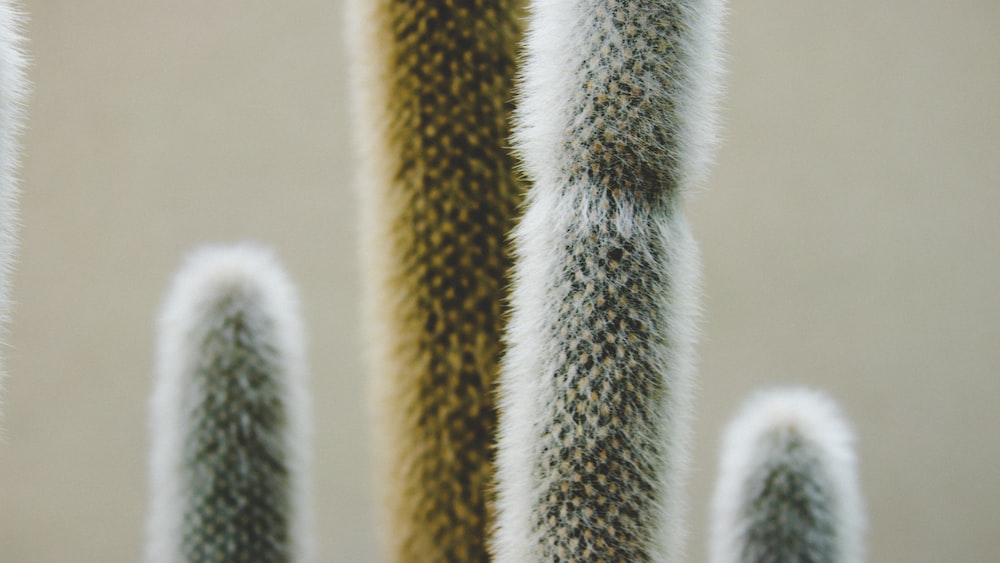
The best fix to this is to first let the soil dry out completely before the next watering. In more severe cases, it might be necessary to re-pot the plant into a fresh, well-draining substrate. My dear reader, I assure you, if you tend to this properly, you’ll witness the magical transformation as your brittle, yellowed Rhipsalis Grandiflora slowly turns green once more.
The key to fixing yellow leaves on your Rhipsalis Grandiflora is to let the soil dry out completely before watering again and, in some cases, repotting it into a fresh, well-draining substrate.
Propagation of Rhipsalis Grandiflora
Propagation of Rhipsalis Grandiflora, my friends, is an absolute delight, since it’s relatively simple and allows you to multiply this whimsical green beauty. This process is indeed a personal joy as it reminds me of nature’s infinite ways of renewing itself.
Propagation Methods for Rhipsalis Grandiflora
There are two common methods you could employ to propagate your darling Rhipsalis Grandiflora. The first is through seeds. Trust me, it’s a thrilling process waiting to see the tiny new sprouts emerge. However, it does take quite a bit of patience as germination might require a few weeks to a few months.
The second, and quicker way, is propagating through cuttings. I fondly remember the first cutting I took from my Rhipsalis Grandiflora; the parent plant seemed to have willingly lent a part of itself to create a new life. With this method, simply take a healthy stem cutting, let it dry for a couple of days to form a callus, and then plant it in a well-draining soil mix.
But remember, regardless of the method you choose, propagation is an act of love and patience that reaps a reward in another beautiful Rhipsalis Grandiflora plant to enjoy.
Tips for Successful Propagation
To ensure successful propagation, here are some tips I’ve gleaned from my personal experience and various studies. First, irrespective of the method you choose, always opt for a well-draining soil mix. This plant is a succulent, after all!
Second, be patient. Each plant has its own timeline to grow. Whether you’re waiting for seeds to germinate or cuttings to root, always remember that plants, like life, grow in their own sweet time. And thirdly, early spring to summer is the best time to propagate your Rhipsalis Grandiflora as this is their active growing season.
Warm temperatures and longer daylight hours during these periods tend to stimulate faster growth.
Rhipsalis Grandiflora in Home Decor
When it comes to adding a touch of natural beauty to indoor spaces, Rhipsalis Grandiflora, with its trailing form and delicate flowers, makes an outstanding candidate. I’ve found it to be a versatile decorator, unfailingly lending a touch of visual appeal to any space it graces.
Using Rhipsalis Grandiflora as an Air Plant
One of my favorite ways to use Rhipsalis Grandiflora in home decor is as an air plant. Its pendulous stems make it perfect for hanging baskets, where it can grow and drape down in a stunning, natural curtain of greenery.
Moreover, it becomes a captivating center of attraction when arranged with other air plants on a rustic wooden plank, mounted on the wall. Picture this: a small cascade of green, like a miniature waterfall, right there on your living room wall. This unique aspect of Rhipsalis Grandiflora can indeed create a soothing and inviting atmosphere in your home.
Styling Tips for Rhipsalis Grandiflora
The ethereal Rhipsalis Grandiflora, with its pendulous cloud of delicate foliage, offers a veritable feast for the eyes.
Consider suspending your plant in a hanging basket or a floating shelf. Its drooping, cascading stems make it a perfect feature piece for a high place, where it can freely express its natural growth pattern. A simple macramé hanger or a vintage bird cage can lend an enchanting juxtaposition of softness and structure.
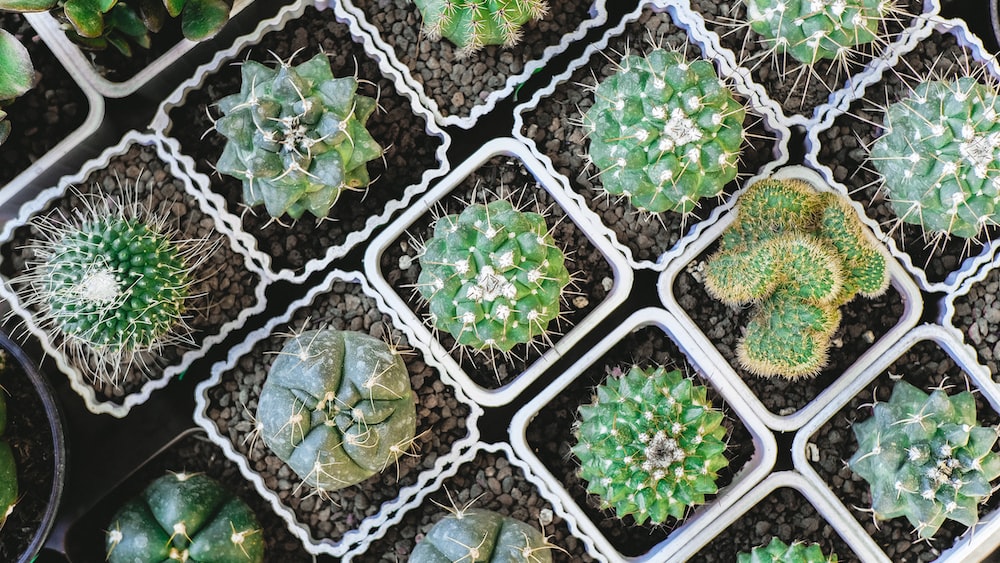
FAQs
1. How often should I water my Rhipsalis Grandiflora?
How often your Rhipsalis Grandiflora needs water can depend on various factors. Typically, consistency is essential for this cactus-relative, aiming to keep the soil slightly moist without becoming soggy. However, don’t let it completely dry out. In heat of summer, it might appreciate a drink once a week, whereas in cooler months, watering might reduce to once every fortnight.
2. Can Rhipsalis Grandiflora grow in low light conditions?
Yes, Rhipsalis Grandiflora can grow in low light conditions. However, it prefers bright, indirect light. If you plan to place this plant in a low light area, remember to adjust your watering schedule accordingly as less light means less water is required due to reduced evaporation.
3. Why are the leaves of my Rhipsalis Grandiflora turning yellow?
A common concern with Rhipsalis Grandiflora is yellowing leaves, often a result of overwatering. Keep a careful eye on your watering routine and the condition of the soil. Allow the soil to dry out slightly but not completely between watering.
4. How can I propagate my Rhipsalis Grandiflora successfully?
Propagating Rhipsalis Grandiflora can be quite straightforward. Choose a healthy plant stem, cut a section of it, let it dry for a few days, and plant it in suitable cacti soil. Ensure your new plantlet gets appropriate lighting conditions and water only when required to prevent rot.
Conclusion
Caring for Rhipsalis Grandiflora isn’t just about nurturing a plant. Through its rhythms and growth, it offers lessons in patience, resilience, and the delicate balance between care and neglect. From its unique physical traits to its surprising adaptability, this plant has much to teach and even more to admire.
Find joy in each new leaf, thrill in its seasonal blooms, and satisfaction when your hands get a bit dirty, tending to the details of its care. In the end, the joy of nurturing Rhipsalis Grandiflora lies in witnessing its growth and the transformation it brings to your space.
As always, remember that plants, like people, are individuals. Each Rhipsalis Grandiflora will have its quirks and preferences, just like you and I. Don’t fret over perfection. Instead, find joy in the journey of understanding and growing alongside your plant.
Until our next green adventure, keep growing, dear friends.
With love,
Sophia.

